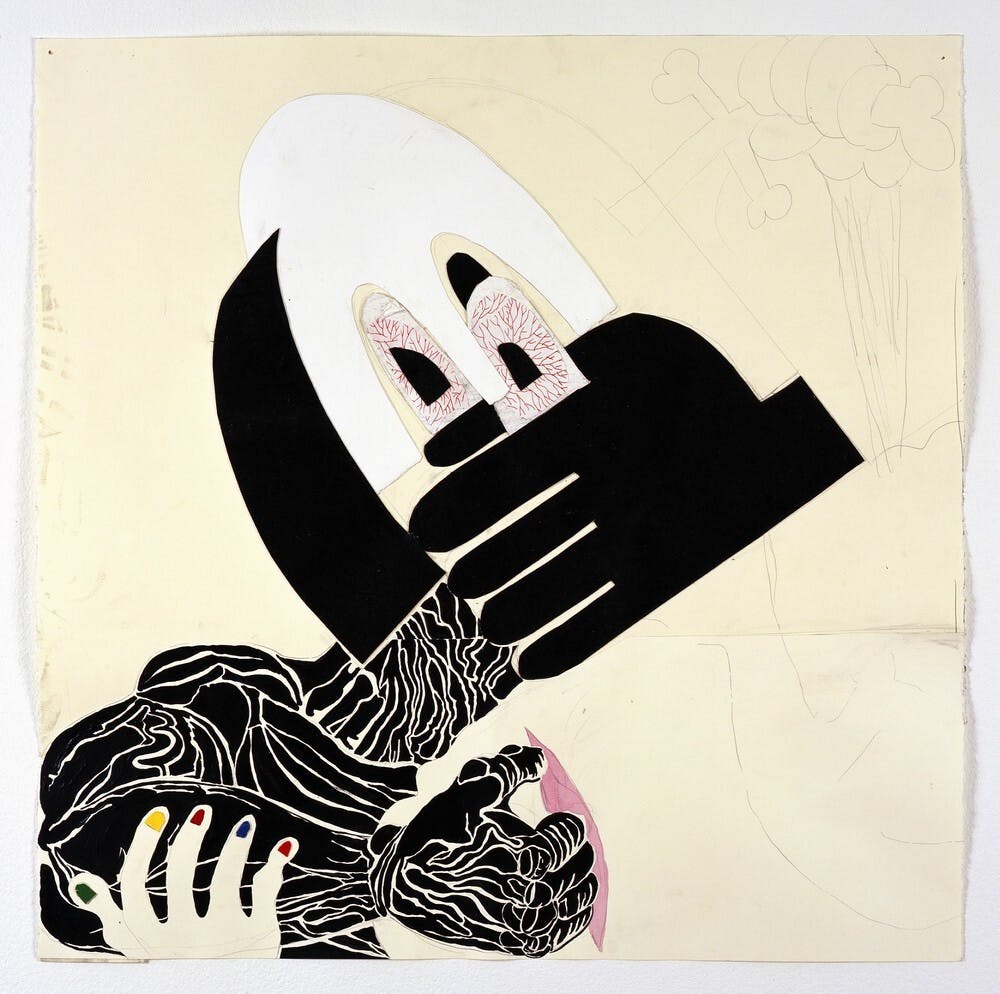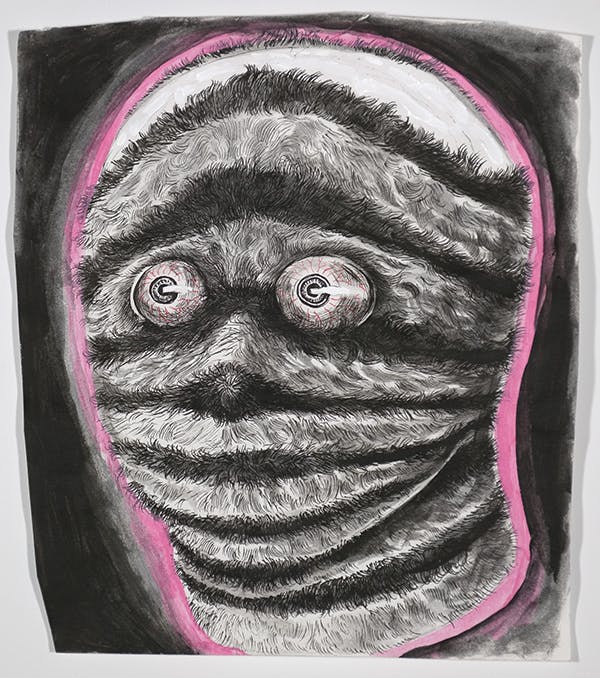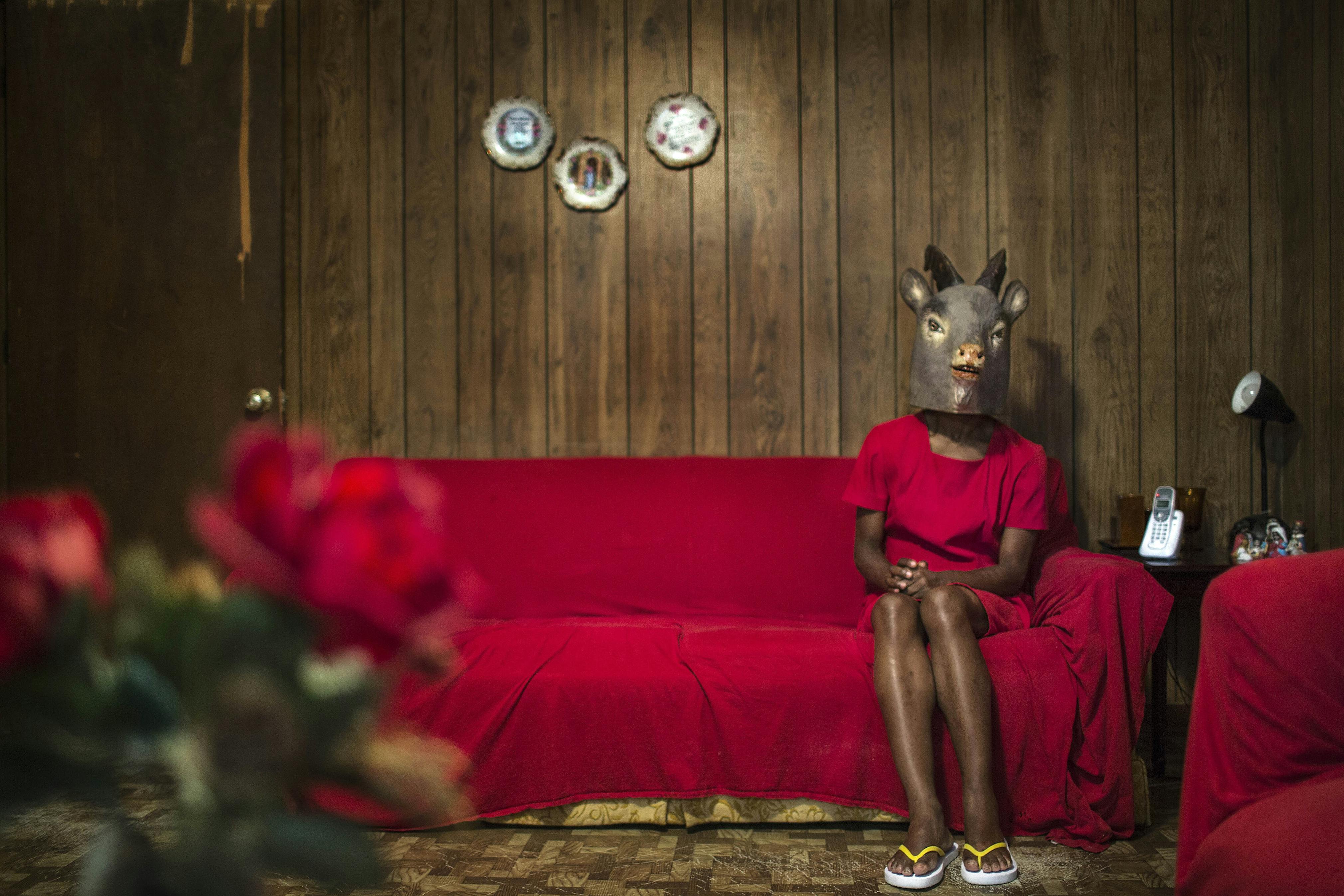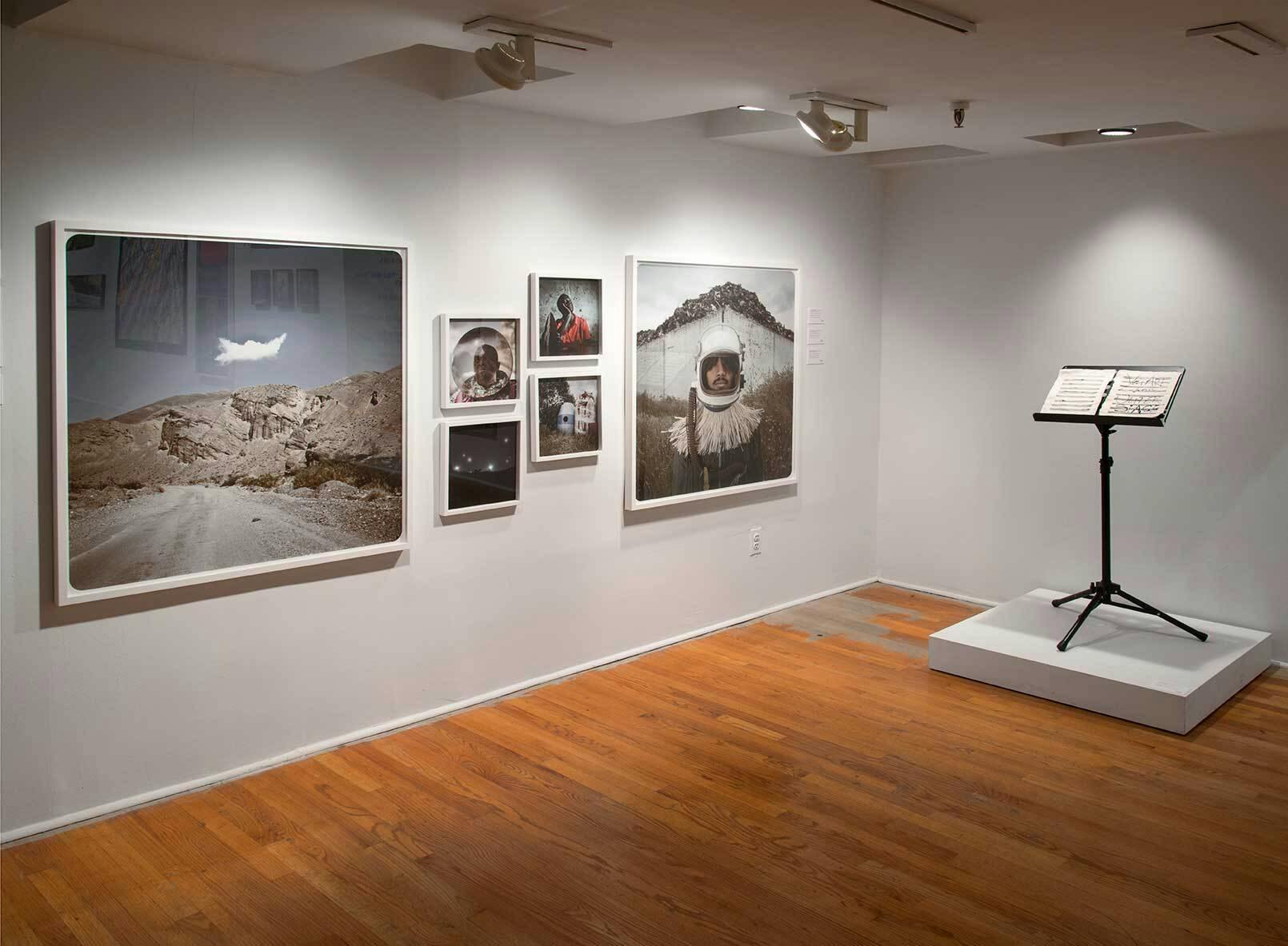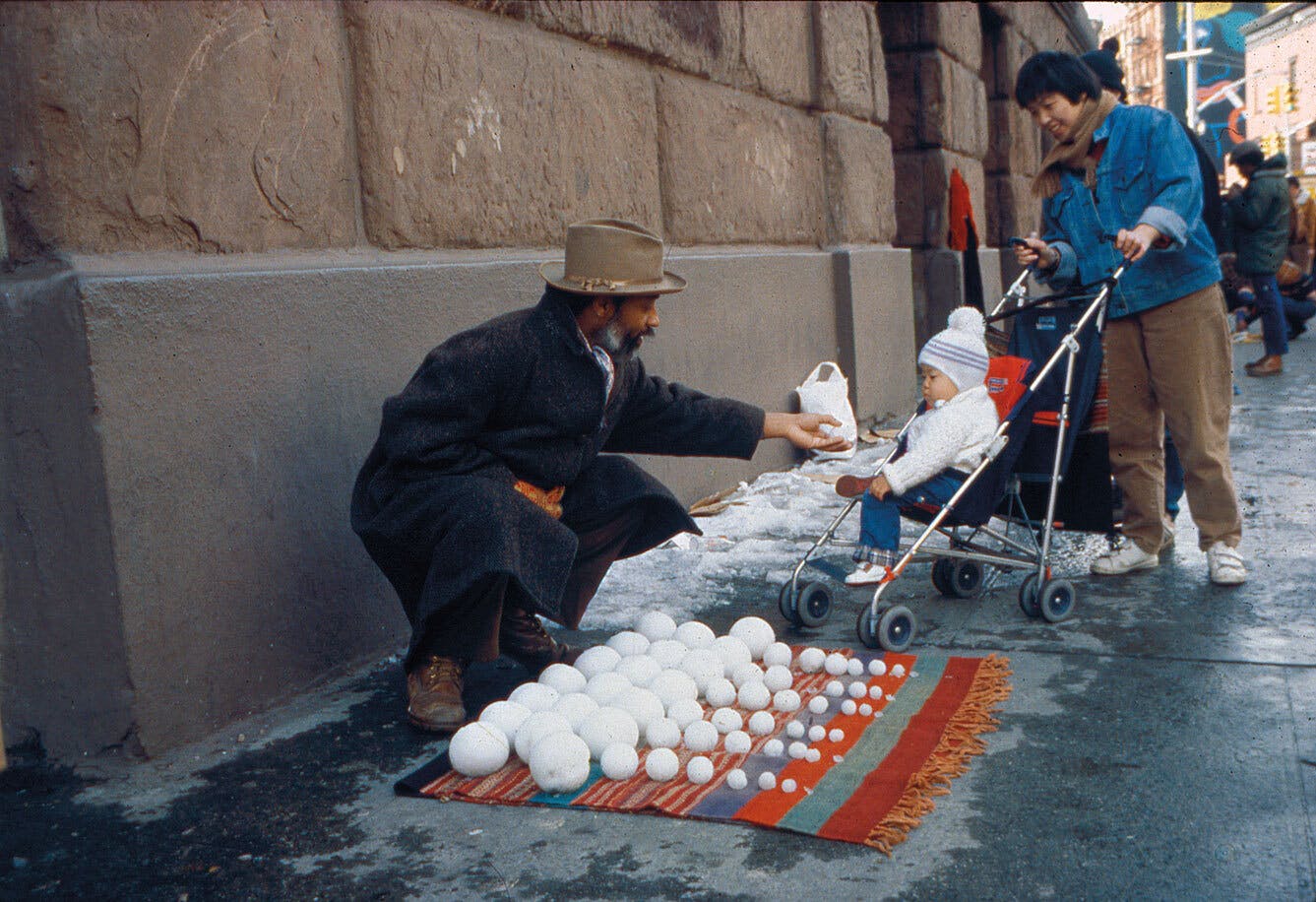Trenton Doyle Hancock
(b. 1974)Trenton Doyle Hancock explores comics as a method through which to propose new mythologies.
Biography
From superhero battles to medieval plays, Trenton Doyle Hancock makes art built on the structure of comic books.
As a child, surrounded by a family of evangelical Baptist ministers and missionaries, he sought out comic books, Greek mythology, and television and media. At age ten, he invented an alter ego named Torpedo Boy—a character he continues to explore within his artistic practice. While he hoped to be a comic book illustrator, at Temple University, he took art courses and began to conceive of his practice primarily as a painter, though one still deeply informed by his love of comics. He worked as a comic artist and illustrator for the school newspaper. A roommate introduced him to Raw (1980–91), an anthology of alternative comics, which in turn brought him to the work of cartoonist and illustrator Gary Panter. In Panter, Hancock saw a kindred spirit: “I saw the painterliness in what he was doing, further giving me license at the time to pursue that in my own work.”[1]
As an undergraduate, he developed an imaginary universe filled with “Mounds,” half-human, half-plant beings who seek to protect and preserve the stability of Earth. Inspired by and referencing artists such as Philip Guston and Henry Darger, Hancock has built a body of work across painting, drawing, and installation that is both autobiographical and fictional. His scenes tease out and muddy the boundary between good and evil, and he continues to explore the Biblical narratives, horror films, and anime that informed his childhood and initial fascination with story and imagery.
Hancock earned a BFA from Texas A&M University and MFA from Temple University. He received the Camille Hanks Cosby Fellowship for African-American Artists, the Skowhegan School of Painting and Sculpture (1997); Artadia Foundation Award (2003); and Texas Medal of Arts Award for Visual Arts, Texas Cultural Trust (2019). In addition to awarding him the Joyce Alexander Wein Artist Prize in 2007, the Studio Museum has presented Hancock’s work in exhibitions including Freestyle (2001); When the Stars Begin to Fall: Imagination and the American South (2014); and Trenton Doyle Hancock: Skin and Bones, 20 years of Drawing (2015).
[1] “Trenton Doyle Hancock,” BOMB, September 15, 2020, https://bombmagazine.org/articles/2020/09/15/trenton-doyle-hancock/.
Exhibitions and Events
Trenton Doyle Hancock
(b. 1974)Trenton Doyle Hancock explores comics as a method through which to propose new mythologies.
Biography
From superhero battles to medieval plays, Trenton Doyle Hancock makes art built on the structure of comic books.
As a child, surrounded by a family of evangelical Baptist ministers and missionaries, he sought out comic books, Greek mythology, and television and media. At age ten, he invented an alter ego named Torpedo Boy—a character he continues to explore within his artistic practice. While he hoped to be a comic book illustrator, at Temple University, he took art courses and began to conceive of his practice primarily as a painter, though one still deeply informed by his love of comics. He worked as a comic artist and illustrator for the school newspaper. A roommate introduced him to Raw (1980–91), an anthology of alternative comics, which in turn brought him to the work of cartoonist and illustrator Gary Panter. In Panter, Hancock saw a kindred spirit: “I saw the painterliness in what he was doing, further giving me license at the time to pursue that in my own work.”[1]
As an undergraduate, he developed an imaginary universe filled with “Mounds,” half-human, half-plant beings who seek to protect and preserve the stability of Earth. Inspired by and referencing artists such as Philip Guston and Henry Darger, Hancock has built a body of work across painting, drawing, and installation that is both autobiographical and fictional. His scenes tease out and muddy the boundary between good and evil, and he continues to explore the Biblical narratives, horror films, and anime that informed his childhood and initial fascination with story and imagery.
Hancock earned a BFA from Texas A&M University and MFA from Temple University. He received the Camille Hanks Cosby Fellowship for African-American Artists, the Skowhegan School of Painting and Sculpture (1997); Artadia Foundation Award (2003); and Texas Medal of Arts Award for Visual Arts, Texas Cultural Trust (2019). In addition to awarding him the Joyce Alexander Wein Artist Prize in 2007, the Studio Museum has presented Hancock’s work in exhibitions including Freestyle (2001); When the Stars Begin to Fall: Imagination and the American South (2014); and Trenton Doyle Hancock: Skin and Bones, 20 years of Drawing (2015).
[1] “Trenton Doyle Hancock,” BOMB, September 15, 2020, https://bombmagazine.org/articles/2020/09/15/trenton-doyle-hancock/.

